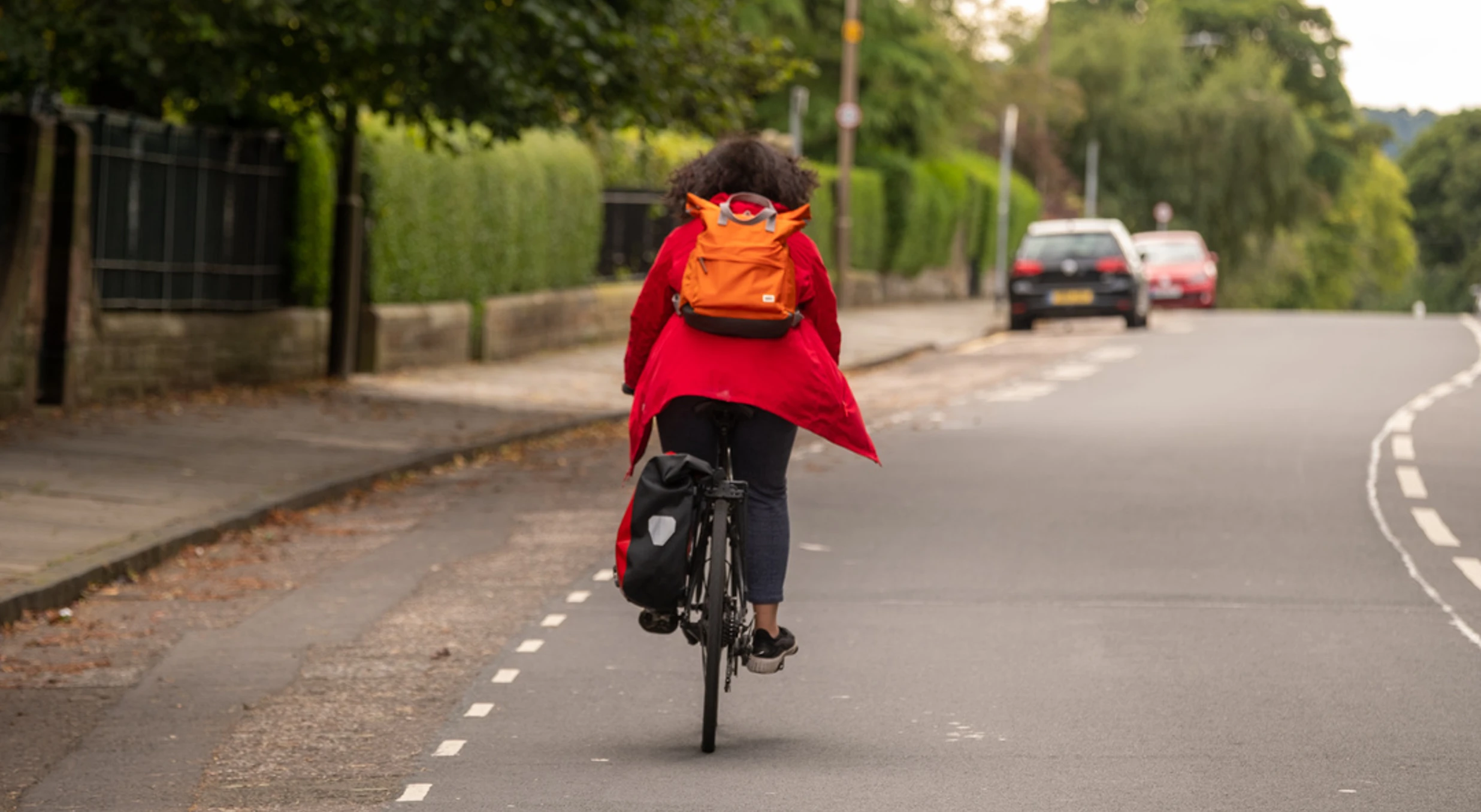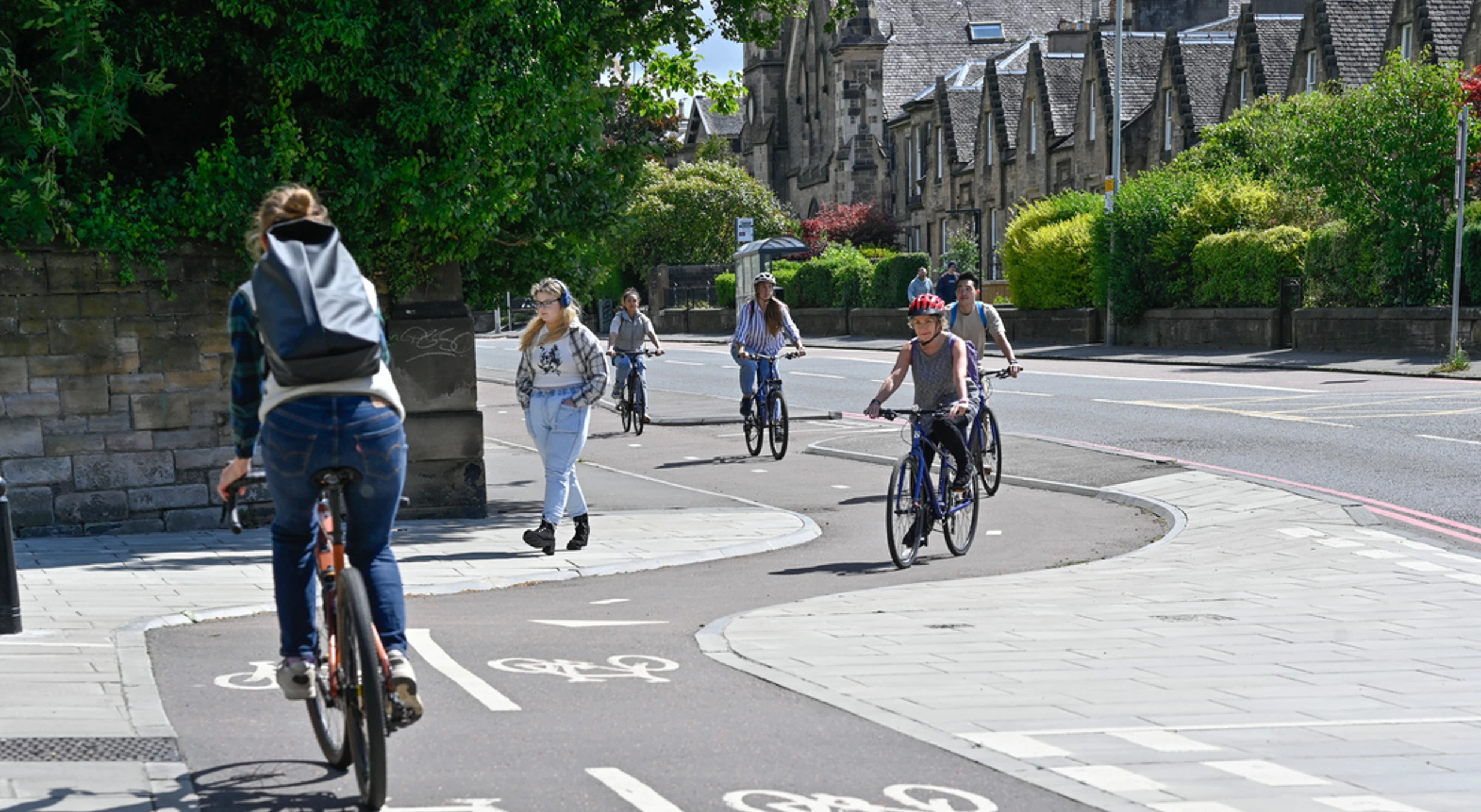
Electric bikes or e-bikes have become an increasingly common sight on our streets in recent years. Quite simply, they're proving to be a real game changer in getting more people cycling - helping unlock longer commutes by bike, reducing barriers such as hills, as well as making cycling more accessible for a wider range of users, including many disabled people.
Whether helping people carry heavy shopping, businesses to make deliveries or parents take kids to nursery, e-bikes are supporting more people to switch up their travel habits and get around in a convenient, healthy and sustainable way.
Despite this positive impact, there's a lot of confusion out there about what e-bikes are, exactly. Too frequently, criticism of entirely legal e-bikes is bundled in with that of illegally modified e-bikes and unlicensed electric motorcycles, which do present serious risks to safety and have no place on our roads.
What’s the difference and why does it matter?
In straightforward terms, e-bikes can be thought of as very similar to regular bikes, except that they provide a limited "boost" from an electric motor when (and only when) the rider is pedalling. E-bikes sold in the UK are legally limited to providing electrical assistance when travelling up to 15.5mph, with a maximum power output of 250 watts. Beyond that point the motor is required to cut out entirely, leaving the rider pedalling on their own.
Illegally modified e-bikes, which have had these motor limits removed, better sit within the legal definition of motor vehicles such as motorbikes or mopeds, which have no such built-in limiter. As such, this means riders then need a licence to ride them on the roads - and they should not be used in spaces designed for regular pedal bikes, such as shared-use paths or separated cycle lanes. If you see someone travelling over 15.5 mph and/or not pedalling on a flat or uphill, they’re likely on an illegal or ‘fake’ e-bike. Tuning kits that derestrict speed limiters are increasingly available online, with the risks of using them extending to other people and the user themselves, given that they’re being applied to bikes, brakes and battery systems not designed to run at such power in the first place.
News reporting that references "e-bike" seizures by police but fails to mention the illegal modifications, is contributing to a wider misunderstanding of what genuine, legal e-bikes are and the many benefits they bring. It’s also common to see media reporting refer to off-road dirt bikes powered by electric motors, as “e-bikes” – an incorrect designation which muddies the waters even further.
Illegally modified e-bikes and risks to safety
Illegally modified e-bikes need to be understood as presenting real risks to people’s safety, whether to the riders themselves or the wider public. A concerning knock-on impact is that fears over the fire safety of illegally modified e-bike batteries are now leading to blanket bans on e-bikes in a growing number of public spaces, including buildings and London train stations: a response which is hindering people from using perfectly safe and legal e-bikes for everyday journeys. This also discriminates against those with additional support needs, who may be using e-bikes as mobility aids.
The ‘e-bike positive’ campaign, a UK-wide public messaging campaign led by the cycling industry, business and charities, is attempting to challenge these perceptions, setting out the extraordinary benefits that real e-bikes offer and providing property owners, insurers and the public with accurate information on e-bike safety. While perceptions can be hard to shift, there will be further developments in this campaign in the next few months.
Contributing to this issue, is that some delivery riders are taking shortcuts over their own and other people's safety with illegally modified e-bikes to complete orders as quickly as possible to earn even a minimum wage. This situation is clearly unacceptable, with action needed from the delivery companies, including robust checks on bikes, more support and training for riders, and steps to remove working conditions that incentivise dangerous risk taking.
It’s not just in the UK that these problems have arisen. In the Netherlands, police are now routinely carrying out roadside tests of e-bikes they suspect of being illegally overpowered, with owners facing immediate fines or confiscation of illegally modified bikes. Enforcement such as this is obviously crucial in keeping streets safer, but more needs to be done to prevent these illegally modified bikes from being used or entering the market in the first place.

Protecting the future of e-bikes
In June 2025, the Westminster All Party Parliamentary Group for Cycling & Walking (APPGCW) published a landmark report, calling for government action to tackle the rise of illegally modified e-bikes and protect the future for legal, safe e-bike use.
Their main recommendations include:
- Calling on online retailers to immediately withdraw unsafe e-bike items from sale.
- Making online marketplaces legally accountable for unsafe listings.
- Creation of a UK government-backed e-bike safety kitemark, enabling transport authorities and insurance companies to confidently lift e-bike bans.
- Reinstatement of 'worker' status for gig economy riders to guarantee rights and protections.
- Enforcing compliance from delivery platforms, including real-time compliance checks on bikes used by couriers.
In Scotland, there are important additional considerations that need to be taken into account as part of any change to the regulation of illegally modified bikes. As genuine e-bikes are categorised as Electrically Assisted Pedal Cycles (EAPC), they are allowed to be used on paths covered by the right of responsible non-motorised access, just as regular pedal cycles are. Any attempt to tackle the issue of illegally modified bikes needs to ensure this status is protected – something that could be put at risk by a blanket reclassification of all e-bikes as motor vehicles, for example.
E-bikes have an important role to play in helping more people to travel in a healthy and sustainable way. However illegal e-bikes are a serious safety risk and the actions outlined above need to be implemented urgently. We also have to help people understand the distinction between the two. By taking action to tackle the use of illegal e-bikes and using language which clearly distinguishes the two, we can protect the many benefits that e-bikes bring, and ensure they remain an effective and sustainable travel choice for the future.

